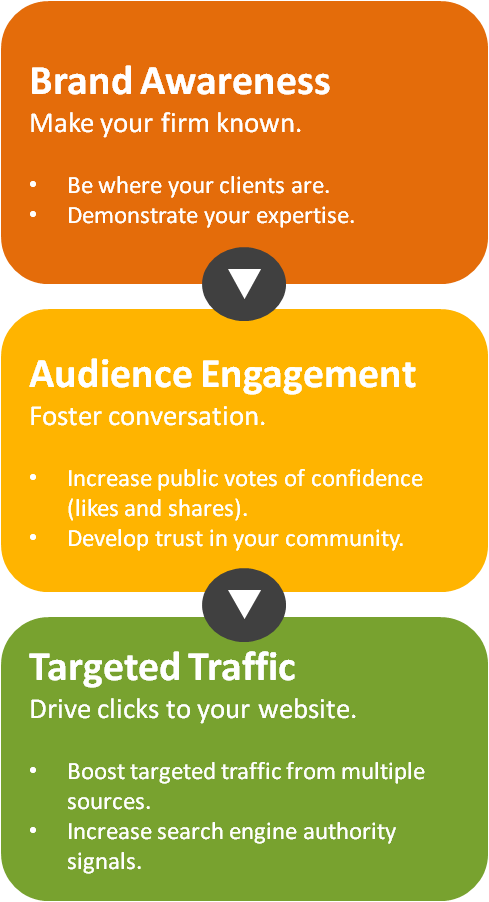
Spring is here at last, and that means now is a great time to get organized. Many folks are going through closets and garages, evaluating what is needed and what can be discarded, and finding better ways to organize the important stuff that remains.
As in life, so in blogging. In the spirit of spring cleaning, spending a little time organizing (or reorganizing) your blog now will pay dividends throughout the year.
When your blog is new, you really don’t have to think very hard about organizing the content for maximum utility to readers. But once your blog has grown to contain hundreds of posts on a wide variety of topics relevant to your practice, you may find that the way those posts are organized is somewhat less than ideal.
So how can your blog be organized to not only provide readers with greater access to the information they are interested in, but also to help create a solid framework for use in categorizing and tagging future posts?
A good first step is to consider exactly what categories and tags are for.
Cleaning up categories and tags to improve reader experience
One of the easiest ways to understand blog categories is to think of them like chapters in a book. No author would create confusing and topically duplicative chapter titles. The whole purpose of a chapter title is to encapsulate in easily understood language the subject matter discussed therein.
Similarly, tags can be thought of as the entries in an index at the back of a book. The purpose of the index is not to capture every single topic addressed in the volume; rather, it is to give the reader an easy way to locate the various places in which important ideas are discussed.
If you are a Blog Service Starter client or you regularly contribute to your Blog Service Essential or Premium, now is a good time to take a look at your blog from the reader’s perspective. Have you added lots of categories? If so, are they all distinct “umbrella” topics? Or do you have two or more categories covering the same general idea? Are there any “orphan” categories that don’t seem to fit into the broader conversation?
Within Movable Type (from the “manage” dropdown), you can manage those categories and the posts within them. Perhaps you will want to combine two similar categories into one or change the name of a category to carry more meaning for readers.
Tags can also be managed in a similar fashion. Do you have a lot of duplicative tags? Or tags used only once or twice in all the posts on your blog? Do your tags convey meaning to the reader? Are they focused on the topics your readers are likely to want to learn more about?
The good news is that except for the most prolific bloggers, giving a good spring cleaning to your category list and tag cloud will only take a few minutes. And it’s time well spent in terms of the impact it can have on readers’ first impressions of your blog and their ability to easily find the engaging and informative content found within.
Picking up loose threads and taking the conversation to the next level
As you are reviewing your blog holistically, you may notice some opportunities to further the conversation about certain interesting topics. Now is a great time to think about the direction you would like to take your blog in the next year. What are the trends in your practice or overall area of practice? How have the needs of your clients and community changed? What are the interesting topics you’ve discussed in the past that could be updated or revisited?
Taking an inventory of your blog is a great way to generate ideas for future blog posts. It’s also an opportunity to think of your blog as a whole, rather than a series of topically similar but essentially unconnected posts. If you take a little time to conduct a high-level review of your work so far, you will likely come away with a good sense of direction moving forward.
One more reminder about tags, categories and SEO
As we have discussed in previous posts (here and here) categories and tags are absolutely not a place to stuff “SEO-style” keywords. If your category list or tag cloud is full of labels like …
- Anytown divorce lawyers
- Anytown divorce attorneys
- Get a fast divorce in Anytown lawyer
- Anytown divorce custody support law firm
… what is fairly certain is that the search engines will pay no notice and that readers will understand at a glance that you are writing for Google, not for them. Savvy blog readers may also know that this strategy does not actually work for SEO, and therefore may have a doubly negative impression of your blog.
Organic, reader-focused categorization and tagging is important. It is important to driving reader engagement, and it is also increasingly important to search optimization. Google has hinted fairly strongly that in 2012 it will roll out algorithm changes designed specifically to address various types of inorganic practices it refers to as “overoptimization.” It is not yet clear whether stuffing SEO keywords into categories and tags will result in a penalty, but in our opinion it is definitely not worth the risk (particularly given there is no actual benefit in terms of search visibility).
So as you are giving your blog a thorough spring cleaning, keep an eye out for any categorization or tagging that might seem like it was done with the aim of impressing search engine robots instead of serving the interests of readers. Your readers — and your potential clients and word-of-mouth referrers — will appreciate it.





